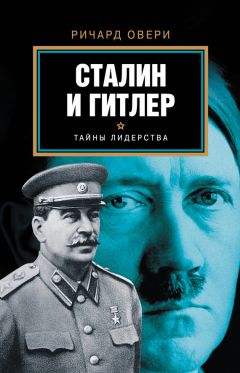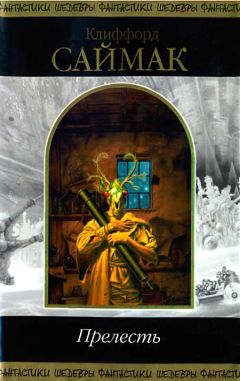90. Carroll, Design for Total War, pp. 91–2, 108–9, 12.
91. R. J. O’Neill The German Army and the Nazi Party, 1933–1939 (London, 1966), p. 87.
92. O’Neill, German Army, p. 90.
93. E. R. Hooton Phoenix Triumphant: the Rise and Rise of the Luftwaffe (London, 1994), pp. 94–9, 110–11; E. Homze Arming the Luftwaffe: the Reich Air Ministry and the German Aircraft Industry, 1919–39 (Lincoln, Nebr., 1976), pp. 51–60, 98–103; A. van Ishoven The Fall of an Eagle: the Life of Fighter Ace Ernst Udet (London, 1977), pp. 152–3, 161–2.
94. Bundesarchiv-Berlin, R2/21776–81, Reich fi nance ministry ‘Entwicklung der Ausgaben in der Rechnungsjahren 1934–1939’, 17 July 1939.
95. O’Neill, German Army, p. 115; A. W. Zoepf Wehrmacht zwischen Tradition und Ideologie: Der NS-Führungsoffi zier im Zweiten Weltkrieg (Frankfurt am Main, 1988), pp. 24–9.
96. O’Neill, German Army, pp. 119–20.
97. See on tensions between old and new elements M. Geyer Traditional Elites and National Socialist Leadership’, in C. Maier (ed.) The Rise of the Nazi Regime: New Perspectives (London, 1986), pp. 57–68; Deist et ai, Deutsches Reich und der Zweite Weltkrieg, pp. 500–17.
98. On army/SS relations O’Neill, German Army, pp. 143–52.
99. B. Wegner Hitlers politische Soldaten: die Waffen-SS 1933–1945 (Paderborn, 1992.), pp. 104–14.
100. Samuelson, Plans for Stalin’s War Machine, pp. 113–15. Offi cers continued to be investigated in the early 1930s, and party membership withdrawn. See F. Schauff ‘Company Choir of Terror: The Military Council of the 1930s – the Red Army Between the XVIIth and XVIIIth Party Congresses’, Journal of Slavic Military Studies, 12 (1999), pp. 136–7, 141–2.
101. Rapaport and Alexeev, High Treason, pp. 15–19.
102. Samuelson, Plans for Stalin’s War Machine, p. 114; Nichols, Sacred Cause, pp. 42–3.
103. D. Volkogonov Stalin: Triumph and Tragedy (London, 1991), p. 319; C.Andrew and O. Gordievsky KGB: the Inside Story (London, 1990), p. 106.
104. S. Main The Arrest and “Testimony” of Marshal of the Soviet Union M. N. Tukhachevsky (May – June 1937)’, Journal of Slavic Military Studies, 10 (1997), pp. 152–5.
105. V. Rogovin 1937: Stalin’s Year of Terror (Oak Park, Mich., 1998), pp. 470–82; see too L. Martens Un autre regard sur Staline (Brussels, 1994), pp. 185–90.
106. A. Resis (ed.) Molotov Remembers: Inside Kremlin Politics (Chicago, 1993), p. 280.
107. A. M. Nekrich Pariahs, Partners, Predators: German-Soviet Relations 1922–1941 (New York, 1997), pp. 88–9, 99–100.
108. Resis, Molotov Remembers, p. 275; Nekrich, Pariahs, Partners, p. 100; R. C. Nation Black Earth, Red Star: a History of Soviet Security Policy 1917–1991 (Ithaca, NY, 1992.), pp. 90, 96. Rykov also confi rmed a ‘plot’: see N. Leites and E. Bernant Rituals of Liquidation: the Case of the Moscow Trials (Glencoe, Ill., 1954), p. 317.
109. R. Reese Stalin’s Reluctant Soldiers: a Social History of the Red Army, 1925–1941 (Lawrence, Kans., 1996), pp. 134–46; N. M. Yakupov ‘Stalin and the Red Army’, Istoria SSSR, 5 (1991), pp. 170–2.
110. H. Deutsch Hitler and his Generals: the Hidden Crisis, January-June 1938 (Minnesota, 1974), p. 40.
111. H. Trevor-Roper Hitler’s Table Talk, 1941–1944 (London, 1974), p. 633, 16 August 1942.
112. Deutsch, Hitler and his Generals, pp. 80–87, 98–104.
113. Deutsch, Hitler and his Generals, p. 111; F. Hossbach Zwischen Wehrmacht und Hitler 1934–1938 (Göttingen, 1965), pp. 123–4.
114. Deutsch, Hitler and his Generals, p. 251.
115. G. P. Megargee Zwszde Hitler’s High Command (Lawrence, Kans., 2000), pp. 44–5; Absolon, Wehrmacht im Dritten Reich, pp. 156–7.
116. IWM, FO 645 Box 158, memorandum by Wilhelm Keitel, The position and powers of the Chief of OKW, 9 October 1945, pp. 1–2.
117. Deutsch, Hitler and his Generals, p. 307.
118. Deist, ‘Aufrüstung der Wehrmacht’, p. 512.
119. Absolon, Wehrmacht im Dritten Reich, pp. 161–70
120. K.-J. Müller ‘Über den “Militärischen Widerstand”, in P. Steinbach and J. Tuchel (eds) Widerstand gegen den Nationalsozialismus (Berlin, 1994), pp. 270–75.
121. Zoepf, Wehrmacht zwischen Tradition und Ideologie, pp. 32–8.
122. O’Neill, German Army, p. 103.
123. Wegner, Hitlers politische Soldaten, pp. 114–15.
124. H. Holdenhauer ‘Die Reorganisation der Roten Armee vor der “Grossen Säuberung” bis zum deutschen Angriff auf die UdSSR (1938–1941)’, Militärgeschichtliche Mitteilungen, 55 (1996), p. 137; Reese, Stalin’s Reluctant Soldiers, p. 144.
125. Rauschning, Germany’s Revolution of Destruction, pp. 166–7.
126. K. E. Voroshilov Stalin and the Armed Forces of the U.S.S.R. (Moscow, 1951), p. 53.
127. G. Engel Heeresadjutant bei Hitler 1938–1943: Aufzeichnungen des Majors Engel, ed. H. von Kotze (Stuttgart, 1974), p. 59.
1. J. Stalin The War of National Liberation (New York, 1942.), p. 13, speech on the German invasion of the Soviet Union, 3 July 1941.
2. F.Taylor (ed.) The Goebbels Diaries 1939–1941 (London, 1982), p. 415.
3. Stalin, War of Liberation, p. 29, speech on the anniversary of the revolution, 6 November 1941.
4. L. Lochner (ed.), The Goebbels Diaries (London, 1948), p. 18.
5. F. Genoud (ed.) The Testament of Adolf Hitler: the Hitler-Bormann Documents (London, 1961), pp. 103–4, 2 April 1945.
6. E. E. Ericson Feeding the German Eagle: Soviet Economic Aid to Nazi Germany, 1933–1941 (Westport, Conn., 1999), pp. 104–
5, 152; S. Pons Stalin and the Inevitable War 1936–1941 (London, 2002), p. 197.
7. Pons, Stalin and War, pp. 186–96; G. Roberts The Soviet Decision for a Pact with Nazi Germany’, Soviet Studies, 44 (1992), pp. 66–8.
8. A. M. Nekrich Pariahs, Partners, Predators: German-Soviet Relations 1922–1941 (New York, 1997), p. 230.
9. R. Tucker Stalin in Power: the Revolution from Above, 1928–1941 (New York, 1990), p. 49.
10. V. A. Nevezhin The Pact with Germany and the Idea of an “Offensive “War”’, Journal of Slavic Military Studies, 8 (1995), p. 811; Pons, Stalin and War, pp. 202–3.
11. Nekrich, Pariahs, Partners, p. 137.
12. Nevezhin, Tact with Germany’, p. 821.
13. R. E. Tarleton ‘What Really Happened to the Stalin Line?’ Journal of Slavic Military Studies, 6 (1993), p. 2, 9.
14. J. Schechter and V. Luchkov (eds) Khrushchev Remembers: the Glasnost Tapes (New York, 1990), p. 46; see too Pons, Stalin and War, pp. 198–9. On fear of Britain see G. Gorodetsky Grand Delusion: Stalin and the German Invasion of Russia (New Haven, Conn., 1999), pp. 14–19.
15. Ericson, Feeding the Eagle, p. 209; Nekrich, Pariahs, Partners, p. 156; H. Schwendemann Die wirtschaftliche Zusammenarbeit zwischen dem Deutschen Reich und der Sowjetunion von 1939 bis 1941 (Berlin, 1993), pp. 373–5.
16. J. Förster ‘Hitler Turns East – German War Policy in 1940 and 1941’, in B. Wegner (ed.) From Peace to War: Germany, Soviet Russia and the World, 1939–1941 (Providence, RI, 1997), p. 120; C. Hartmann Halder. Generalstabschef Hitlers 1938–1942 (Paderborn, 1991), pp. 225–6.
17. Hartmann, Halder, p. 226; J. Förster ‘Hitler’s Decision in Favour of War Against the Soviet Union’, in H. Boog et al. Germany and the Second World War: Volume IV: the Attack on the Soviet Union (Oxford, 1998), pp. 25–9.
18. G. Ueberschär and W. Wette (eds) ‘Unternehmen Barbarossa’: Der deutsche Überfall auf die Sowjetunion (Paderborn, 1994), pp. 98–100.
19. Ueberschär and Wette, ‘Unternehmen Barbarossa? p. 90; N. von Below At Hitler’s Side: the Memoirs of Hitler’s Luftwaffe Adjutant 1937–1945 (London, 2.001), pp. 42–3, 46–7.
20. Ueberschär and Wette, ‘Unternehmen Barbarossa’, p. 91.
21. Genoud, Testament of Adolf Hitler, p. 63, 15 February 1945. In 1945 Hitler maintained that his primary motives were strategic and economic: ‘War with Russia had become inevitable, whatever we did’ (p. 66).
22. Förster, ‘Hitler Turns East’, pp. 121, 126.
23. Ueberschär and Wette, ‘Unternehmen Barbarossa’, p. 107; von Below, At Hitler’s Side, pp. 91–2.
24. H. Trevor-Roper (ed.) Hitler’s War Directives 1939–1945 (London, 1964), p. 86; Gorodetsky, Grand Delusion, pp. 67–75.
25. F. W. Seidler and D. Zeigert Die Führerhauptquartiere: Anlagen und Planungen im Zweiten Weltkrieg (Munich, 2000), pp. 193–6.
26. Trevor-Roper, Hitler’s War Directives, pp. 93–4.
27. Förster, ‘Hitler Turns East’, p. 127.
28. Förster, ‘Hitler Turns East’, p. 129; A. Hillgruber ‘The German Military Leaders’ View of Russia prior to the Attack on the Soviet Union’, in Wegner, From Peace To War, pp. 172, 182.
29. Trevor-Roper, Hitler’s War Directives, pp. 130–31, Directive no. 32 ‘Preparations for the Period after Barbarossa’; Taylor, Goebbels Diaries, p. 414.
30. K. Alt ‘Die Wehrmacht im Kalkül Stalins’, in R.-D. Müller and H.-E. Volkmann (eds) Die Wehrmacht: Mythos und Realität (Munich, 1999), pp. 107–9.
31. D. Glantz Stumbling Colossus: the Red Army on the Eve of World War (Lawrence, Kans., 1998), pp. 90–93.
32. Glantz, Stumbling Colossus, pp. 95–6.
33. Tarleton, ‘Stalin Line’, p. 50; C. Roberts ‘Planning for War: the Red Army and the Catastrophe of 1941’, Europe – Asia Studies, 47 (1995), p. 1319; Glantz, Stumbling Colossus, pp. 103–4.
34. Nevezhin, ‘Pact with Germany’, p. 821.
35. Alt, ‘Die Wehrmacht’, p. 111; L. A. Bezyminsky ‘Stalins Rede vom 5 Mai 1941 – neu dokumentiert’, in G. R. Ueberschär and L. A. Bezminsky (eds) Der deutsche Angriff auf die Sowjetunion 1941: Die Kontroverse um die Präventivkriegsthese (Darmstadt, 1998), pp. 136–41; see too J. Förster and E. Mawdsley ‘Hitler and Stalin: Secret Speeches on the Eve of Barbarossa’, War in History, 11 (2004), pp. 88–100 for recent versions of the 5 May speech.
36. Förster and Mawdsley, ‘Hitler and Stalin’, pp. 101–2.
37. V. A. Nevezhin ‘The Making of Propaganda concerning USSR Foreign Policy, 1939–1941’, in N. Rosenfeldt, J. Jensen and E. Kulavig (eds) Mechanisms of Power in the Soviet Union (London, 2000), pp. 159–60; Nekrich, Pariahs, Partners, p. 241; Förster and Mawdsley, ‘Hitler and Stalin’, pp. 86–7 for the reaction to the 5 May speech.
38. Nekrich, Pariahsy Partners, pp. 228–9.
39. Glantz, Stumbling Colossus, pp. 239–43.
40. G. F. Krivosheev Soviet Casualties and Combat Losses in the Twentieth Century (London, 1997), p. 98; R. Stolfi Hitler’s Panzers East: World War II Reinterpreted (Norman, Okl., 1991), pp. 88–9; A. G. Chor’kov ‘The Red Army during the Initial Phase of the Great Patriotic War’, in Wegner, From Peace to War, p. 416.
41. For details see D. M. Glantz Before Stalingrad: Barbarossa – Hitler’s Invasion of Russia 1941 (Stroud, 2003), chs 7–8; Trevor-Roper, Hitler’s War Directives, pp. 152–5, Directive no. 35, 6 September 1941.




